For loyal, outdoorsy, and practical Subaru Forester owners, the 2025 Forester Hybrid will be a tempting option. But at a price.

The 2025 Subaru Forester Hybrid is available in four trim levels. Starting prices range from $38,000 to $45,000. (Photography by Subaru or as credited; Mark Maynard photo above)
Jump To Special Features
2025 Forester Hybrid Assets
2025 Subaru Forester Hybrid Pricing
Forester’s Hybrid Powertrain
Forester Hybrid Strengths
Forester Hybrid Weaknesses
Why Buy the 2025 Subaru Forester Hybrid?
Specifications
I thought I might be on the hook for a $45,000 Subaru Forester Hybrid. Not that this new compact hybrid SUV would be a bad thing. But when the girlfriend-wife came out to see the just-delivered tester, she was uncommonly enthusiastic. “I love it,” she said. “I love the exterior [style], and I love the paint color!”
She loves the paint color, I said to myself. Typically, she’s all in for white. The top-line Forester Touring Hybrid tester was in the new two-tone hue of Autumn Green Metallic complemented by a black roof. The dark green lower reminded me of metallic U.S. Army green. In my opinion, a much classier two-tone choice is the Brilliant Bronze Metallic, almost gold.
Subaru has added a few two-tone paint options, but only for the top Touring Hybrid trim. The roof color is Crystal Black Silica. Lowers are in Autumn Green Metallic, River Rock Pearl, Magnetite Gray Metallic, or Brilliant Bronze Metallic. Each two-tone option adds $395 or $495, except for the two-tone River Rock Pearl (light gray), which is $890 or $395 for a monotone option.
My girlfriend-wife might have shown such enthusiasm in support of me. The Forester Hybrid is among three compact hybrid SUVs I am considering to replace our 2008 Ford Escape Hybrid. Also on my shopping list are the Honda CR-V hybrid and Hyundai Tucson hybrid. Now, however, I must wait for a test of the redesigned 2026 Toyota RAV4, an all-hybrid lineup. It is expected to be on sale later this year or early 2026.
The Subaru Forester had a complete redesign for the 2025 model year. I liked it so much that I was eager to test the hybrid. My 2025 Forester Sport review is here.

The basic black interior has engaging designer textures.
2025 Forester Hybrid Assets
For loyal, outdoorsy, and practical Subaru Forester owners, the 2025 Forester Hybrid will be a tempting option. But at a price. Depending on trim level, the hybrid costs $1,700 to $3,000 more than the non-electrified Forester, available in seven trims. However, with gasoline prices pushing $5 a gallon in areas of California, that price overage might be reassuring.
Among the Forester Hybrid assets:
- Series-parallel hybrid system developed with partner Toyota Motor Corp. (Our ’08 Escape Hybrid uses a Toyota hybrid powertrain. It proved every day dependable until 140,000 miles when the hybrid battery needed to be replaced. A new battery pack from GreenTec Auto cost $4,265, including mobile delivery to San Diego with installation.)
- More power, 194-hp vs. 180-hp in the gas Forester.
- A 40 percent boost in fuel economy over the non-hybrid Foresters. Official hybrid mileage ratings are 35 mpg city, 34 highway, and 35 mpg combined. A non-hybrid Forester Sport/Touring has mileage ratings of 25/32/28 mpg.
- 581 mile cruising range from its 16.6-gallon tank, using 87 octane. The hybrid Forester’s total range is 100 miles better than the least expensive base Forester.
- Two exclusive two-tone paint options for the 2025 Subaru Forester Touring Hybrid.
- EV Mode: By engaging the dashboard button, the Forester hybrid will run on battery power up to about 20 mph. How far will depend on the battery’s state of charge.

The front seats are not overly bolstered with secure support.
2025 Subaru Forester Hybrid Pricing
The 2025 Subaru Forester Hybrid is available in trim levels of Premium, Sport, Limited, and Touring. All are off-roading capable with Subaru’s Symmetrical All-Wheel Drive. Also standard on all Foresters is the latest generation of Subaru’s EyeSight driver-assist technology.
2025 Forester Hybrid starting prices range from $38,015 Premium, $41,015 Sport, $42,430 Limited, and $44,715 Touring.
All manufacturer suggested retail pricing includes the $1,420 freight charge from Gunma, Japan. However, production of the Forester Hybrid will transition to Subaru of Indiana Automotive in Lafayette, Ind., starting with the 2026 model year.
Today’s tester is the top-line Forester Touring Hybrid, which has a sticker price of $45,210, including $495 for the Autumn Green Metallic Two-Tone paint. The Touring’s substantial equipment list is outlined in the specifications chart below.
Check current Subaru Forester Hybrid pricing here.
Find special offers for the 2025 Subaru Forester and Forester hybrid here.

The 11.6-inch vertical multimedia screen is colorful but can be confusing to master.
Simplicity in Pricing
Subaru keeps the Forester’s content simple yet rich. Each trim level is well-appointed and most have no factory packages to boost the price. There are many accessories, however, for floor liners, camping, and pet travel.
The brand’s warranty coverage, however, is stuck in the 1980s. Basic bumper-to-bumper coverage is for 3 years or 36,000 miles and includes roadside assistance. The powertrain has more extensive coverage of 5 years or 60,000 miles.
The hybrid system has coverage of 8 years or 100,000 miles, including the hybrid battery, electric motor, and related components.
Buyers can also opt for the Subaru Added Security program, which can provide coverage for up to 10 years or 120,000 miles. Costs range from $1,200 to $3,000, depending on the plan and coverage. Learn more here.

Navigation routes are displayed in the 12.3-inch configurable digital instrument cluster.
Saving Money
I especially like that Subaru resists adding gimmicky electronics as standard equipment. Most of these add-ons just strain the 12-volt battery. Among those flashy accessories are:
Auto-Dimming Exterior Mirror with Approach Light, $299. Upon approaching the vehicle or unlocking your doors with the keyless entry system, LED lights behind the Subaru logo in each side mirror shine to the ground. At night, the exterior auto-dimming mirrors reduce headlight glare and dim in conjunction with the auto-dimming rearview mirror.
Footwell Illumination Kit, $235. Illuminate the dark corners of the front floor.
Door Projector Lights, $285. A silhouette of the Forester is projected onto the ground when the front doors are open.
Convenience and Security Subscription Services
The Subaru and the Forester are at your service with 4G Internet capability. Owners have a checklist of convenience and security extras, at a cost. Subscriptions are accessed via the MySubaru Connected Services app, which includes a complimentary 3-year trial of MySubaru Safety.
After the trial, MySubaru Safety is $99.95 per year or $9.95 a month. MySubaru Connected Services includes such features as SOS emergency assistance, advanced automatic collision notification, and enhanced roadside assistance.
Owners can build on MySubaru Safety with MySubaru Security for $4.95 a month. These services include stolen vehicle recovery-plus, remote engine start with climate control, and remote start remote vehicle locator.
Subscription rates can be found here.

The Forester hybrid is Subaru’s first series-parallel hybrid system, developed with Toyota Motor.
Forester’s Hybrid Powertrain
The Forester hybrid is the first use of the brand’s series-parallel hybrid system, developed with partner Toyota Motor Corp. The system integrates a 2.5-liter Atkinson-cycle “boxer” four-cylinder engine with a continuously variable transmission. The system pairs two electric motor generators for all-wheel drive with an electric traction motor, and a 1.1-kilowatt-hour lithium-ion battery. The same hybrid powertrain has been applied to the upcoming 2026 Subaru Crosstrek Hybrid.
The Forester hybrid’s 194 hp combined (gas and electric) is an improvement, but just by 14 hp. Peak torque at 3,600 rpm doesn’t give much grunt for speedy take-offs. What it lacks in acceleration force, it benefits from improved fuel economy.
During my weeklong test, which covered approximately 200 miles, I achieved a highway mileage of 33 mpg, including over 80 miles of highway driving. Around town, the mileage readout ranged between 23 and 25 mpg. That is better than my 17-year-old Escape Hybrid, but still short of the Forester Hybrid’s EPA city rating of 35 mpg.
My somewhat lower fuel economy is likely due to the Touring’s heaviest curb weight of the Forester Hybrids: 3,946 pounds. That poundage is 73 pounds more than the base Forester, the likely source to set EPA mileage ratings.
All Forester hybrid models have a towing capacity of 1,500 pounds, with a tongue weight of 150 pounds.

Steering responsive LED headlights.
Forester Hybrid Strengths
My next vehicle will be bought for its reliability, dealership experience, and nimble handling. I do not want to be a frequent flyer to the dealership. The Forester excels in all three criteria.
- The Forester is a workhorse with a squared-off cargo space and tall loading capacity. Too often, compact SUVs are made fashionably sleek at the sacrifice of utility. The hybrid battery is under the cargo floor, which does not compromise real cargo capacity.
- The Forester’s turning circle is a tidy 35.4 feet with 19-inch tires, and 35.1 feet with 18-inch tires. My Ford Escape Hybrid has the turning circle of the Queen Mary ocean liner, or 40-plus feet.
- The Touring tester’s ride quality feels robust with a well-tuned steel-spring suspension. Weight transfers are fluid and balanced, and especially smooth over cracked up road surfaces.
- Sightlines are refreshingly uncompromised at the side mirrors, across the hood, and out the back glass. That kind of driver awareness is critical to safety.
- The front seats are not overly bolstered with secure support. The raised ride height aids no-wedgie entry and exit.
- The wireless charging tray is within easy reach. The space includes a 3.0-amp Type-C USB and a 2.4-amp Type-A USB, plus an audio input.
- Subaru’s EyeSight Driver Assist Technology provides accurate and consistent semi-autonomous driving. But keep both hands on the wheel or the Forester will chide the driver with an insistent warning tone.

There is an easy step-in and out of the back seat with generous legroom of 39.4 inches.
Forester Hybrid Weaknesses
- Subaru insists on using a tablet-like center infotainment screen. Its vertical orientation might simplify the grouping of controls, but making adjustments will take time to avoid taking eyes off the road. While there are volume and tuning knobs, the climate control settings are low in the screen. I adapted for at-a-glance adjustments, but the narrow width for the rearview camera is inadequate. A horizontal camera view is much better.
- The Forester Hybrid cabin is not quiet at highway speeds. There is noticeable wind noise at the side mirrors.
- The front seats are short on thigh support for tall drivers, and the seat bottom feels hard after an hour on the road.
- The basic black interior works well for a Forester that will be a trail rider. Unfortunately, the two-tone green or bronze Touring Hybrids are not allowed the handsome brown seating and trim. Why?
- The underfloor hybrid battery takes the space where a spare could go. Owners are left with a tire-inflator kit, which might be a complication when popping a tire off-road.
- Not among the Forester’s standard equipment are parking alerts, which I consider a simple safety asset. The Touring trim is the only trim that has a 360-degree surround view monitor. Instead of parking alerts, the camera can be switched on to display the proximity of objects.
- Subaru also lags in its 120-watt inverter for the 12-volt plug. The inverter converts 12-volt DC power to 110-volt AC power. The Forester’s inverter is wimpy for most uses, especially the tire inflator. Subaru should provide better. Campers and overland adventurers will want to hard-wire a more potent 400- to 1,000-watt inverter. This is, after all, a Forester.

The Forester is a workhorse with a squared-off cargo space and tall loading capacity.
Why Buy the 2025 Subaru Forester Hybrid?
The tester’s $45,000 price is above the value limit in my mind for a Forester Hybrid. Its price, however, is close to the top competing compact hybrid SUVs. In comparison, an all-wheel-drive Hyundai Tucson is $43,290, with more power but comparable fuel economy. A top-line 2025 Toyota RAV4 Limited starts at $42,355. However, it would require an additional $1,840 to match the standard equipment of the Forester Hybrid.
After the week of driving, the girlfriend-wife made the decision: Keep searching.
She did not like:
- The Forester’s seats felt too hard for vacation travel.
- There is too much interior noise at highway speeds.
- The black interior was too bland. Why isn’t the handsome brown interior available with two-tone paint?
- And she found the vertical infotainment screen to be confusing and distracting to use.
Read what other Subaru Forester owners say about theirs here.

The redesigned sixth-generation 2025 Subaru Forester is the compact SUV it was born to become.
2025 Subaru Forester Hybrid Touring Specifications
Body style: 5-seat, 5-door all-wheel-drive SUV; unitized body construction
Engine: 162-hp 2.5-liter Atkinson-Miller cycle 4-cylinder with horizontally opposed cylinders; 154 lb.-ft. torque
Hybrid system: series-parallel with two electric motor generators (AWD) integrated with the gas engine, hybrid transaxle, and Subaru symmetrical all-wheel drive
Electric motor: 3-phase AC synchronous
Electric motor output: 118 hp (88kW); 199 lb.-ft. torque
Total system power: 194 hp
Battery: high-voltage sealed lithium ion
Transmission: Lineartronic CVT with 6-speed manual shift; 2 motor generators; includes X-mode, SI Drive performance modes; EV Drive mode;
Symmetrical AWD: Active all-wheel drive system with electronically controlled center coupling that actively manages torque split based on acceleration, deceleration, and available traction
Fuel economy: 35/34/35 mpg city/hwy/combined; 87 octane fuel recommended
BY THE NUMBERS
Length/wheelbase: 183.3/105.1 inches
Towing capacity: 1,500 pounds; 150 lb. tongue weight
Fuel tank: 16.6 gallons; 581 miles estimated driving range;
Cargo space: 27.5 to 69.1 cubic feet, rear seats up/down
Front head/leg room: 40/43.3 inches
Rear head/leg room: 37.7/39.4 inches
Curb weight: 3,946 pounds, Touring model
Turning circle: 35.4 feet (35.1 Premium and Limited models)
FEATURES
Standard Touring Hybrid equipment includes: keyless entry with push-button start, 360-degree surround view monitor and rearview camera, leather-trimmed upholstery with Ultrasuede centers, leather-wrapped steering wheel and shift lever, 12.3-inch configurable digital instrument cluster, 10-way power adjustable driver’s seat, 8-way power adjustable passenger seat, 2-position driver’s seat and power mirror memory, 11.6-inch vertical multimedia tablet infotainment display with navigation, auto-on/off headlights, tilt-telescoping steering column, panoramic power moonroof, heated and ventilated front seats, heated steering wheel, illuminated front USB-A and USB-C input ports, 11-speaker Harman Kardon premium audio system, 4G LTE Wi-Fi capability (data subscription required);
Interior, rear: heated and reclining rear window seats, 60/40-split flat-folding rear seatbacks with one-touch folding function, foot-activated hands-free power rear gate (with automatic close, height memory function, and vehicle lock button), fold-down rear armrest with dual cup holders, cargo-area grocery bag and tie-down hooks, cargo-area rear gate light.
Exterior: 19-inch 235/50 all-season tires and dark gray aluminum-alloy wheels with machine finish (with temporary tire repair kit), LED steering responsive headlights, LED fog lights, roof spoiler, Crystal Black silica-finish folding side mirrors, side-mirror-integrated turn signals, windshield wiper de-icer and heated side mirrors (all-weather package), single-speed rear window wiper with fixed-intermittent mode, low-profile roof rails, single stainless steel exhaust outlet.
Safety features include: 9 air bags, 4-wheel ABS, Brake Assist, brake override control, traction and stability controls (Vehicle Dynamics Control)
Safety technologies include: EyeSight Driver Assist Technology, high beam assist, DriverFocus distraction mitigation system, blind-spot detection with lane change assist and rear cross-traffic alert, reverse automatic braking, whiplash-reducing front seats with height- and tilt-adjustable head restraints.
CHASSIS COMPONENTS
Brakes: 4-wheel ventilated discs; 12.6-inch front rotors, 11.8 inches rear
Steering: electric power assisted rack-and-pinion; turning circle 35.4 feet (35.1 feet Premium and Limited models)
Tires-wheels: Touring, all-season 235/50 19 inches; dark gray alloy wheels
Suspension: 4-wheel independent, raised; front MacPherson struts, lower L arms, coil springs, stabilizer bar, and hydraulic engine mounts
PRICING
Base price: $44,715, including $1,420 freight charge; price as tested $45,210
Options on test vehicle: Autumn Green Metallic two-tone $495.
Where assembled: Gunma, Japan.
Warranties: 3-years/36,000-miles basic bumper to bumper with roadside assistance; 5-years/60,000-miles powertrain; hybrid system 8-years/100,000-miles (coverage includes the hybrid battery, electric motor, and related components).

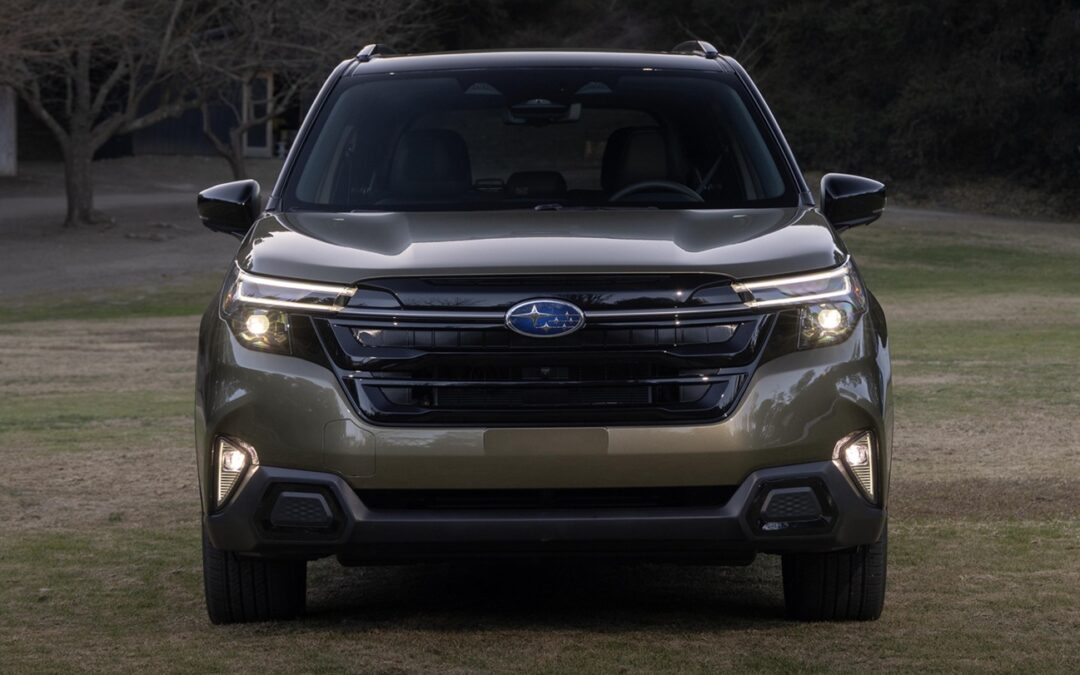
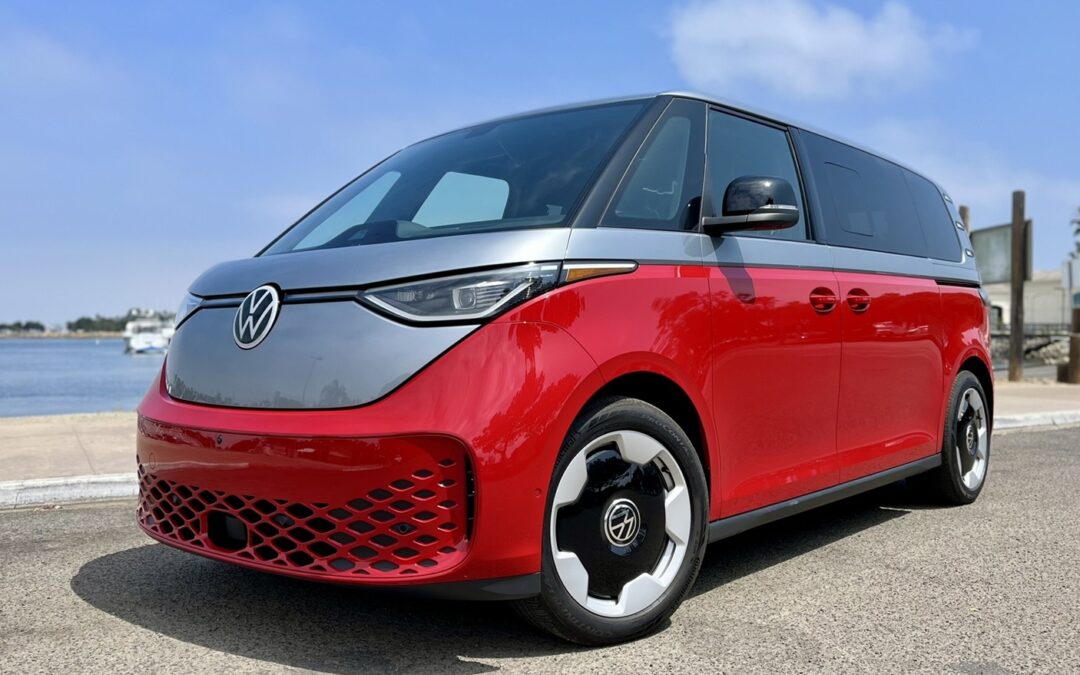
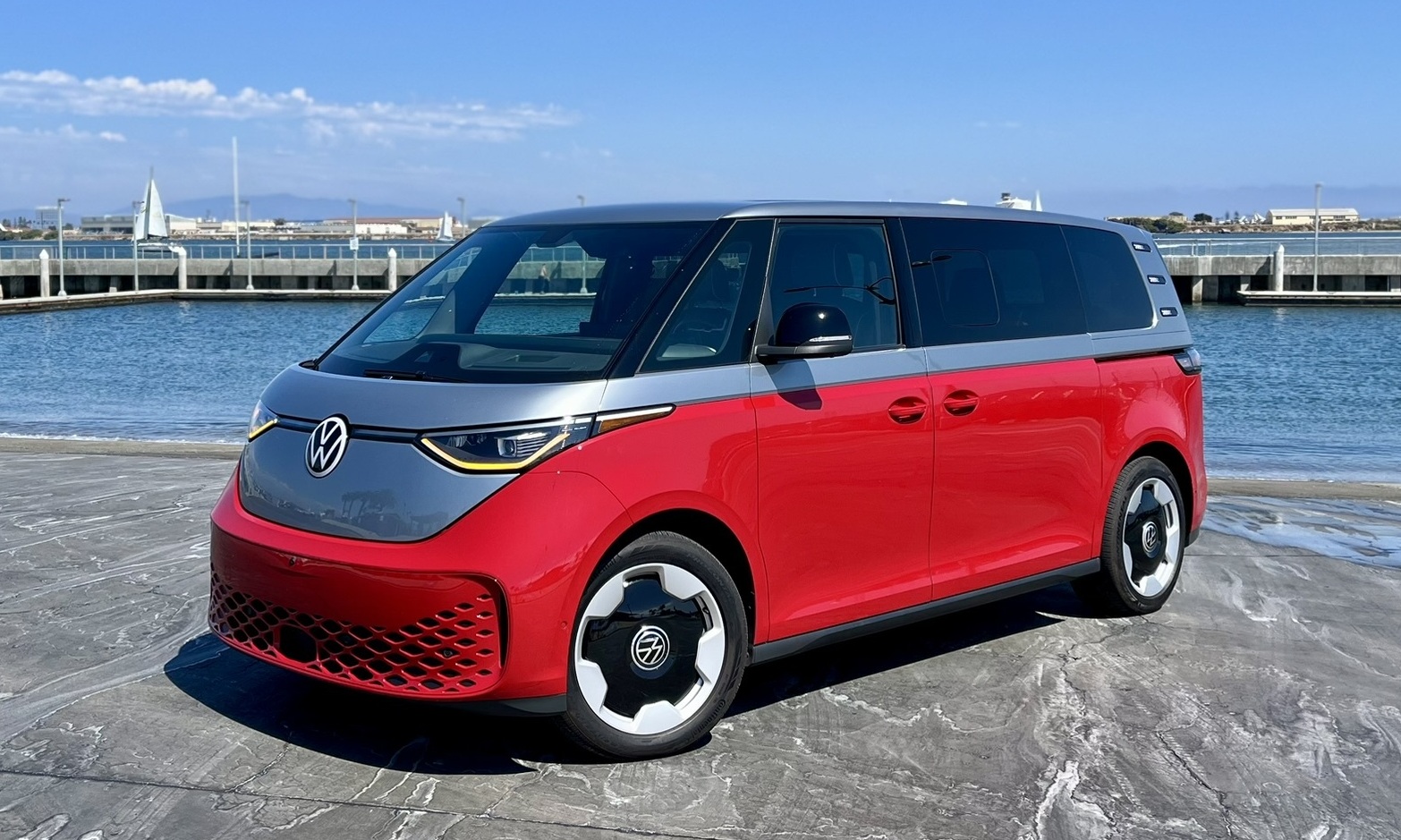
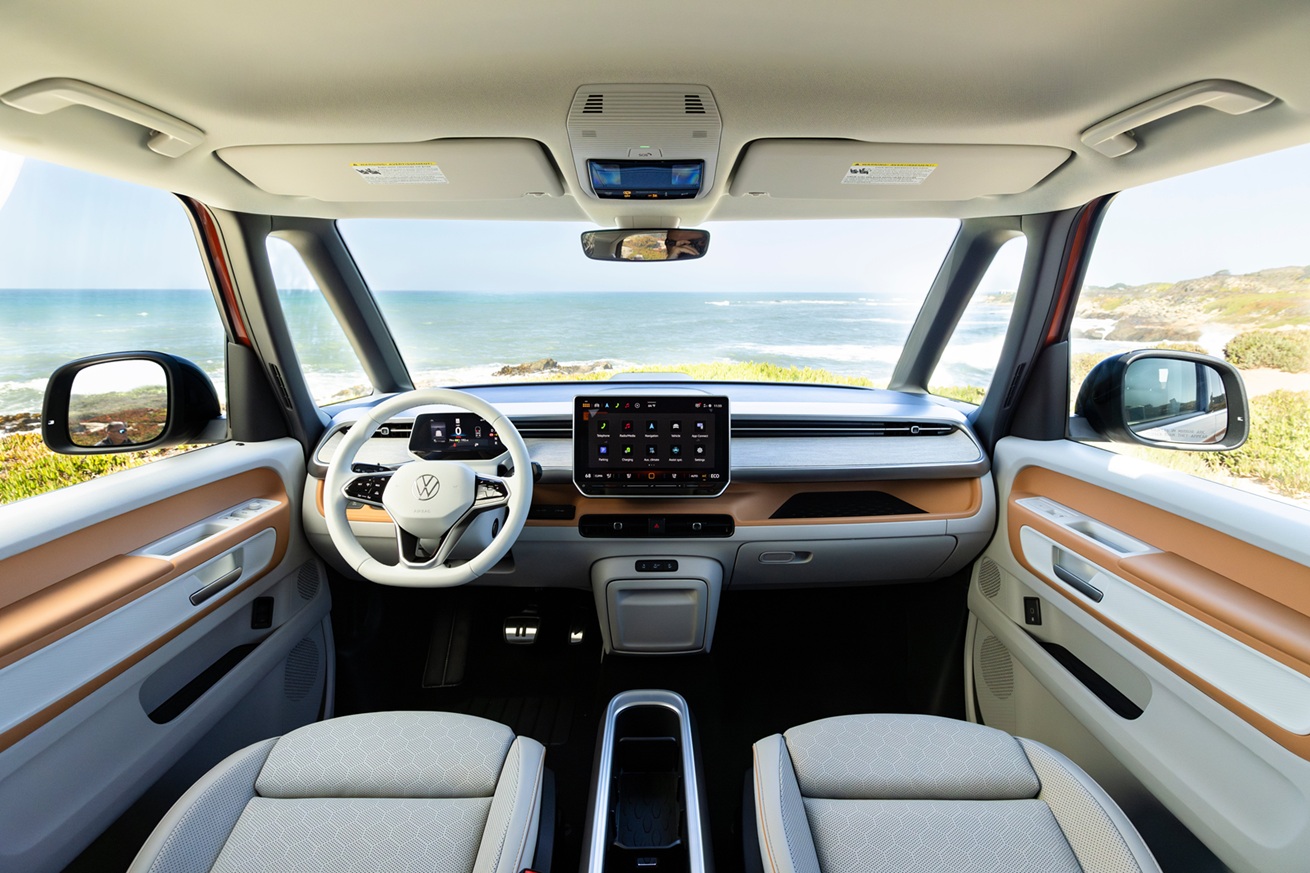
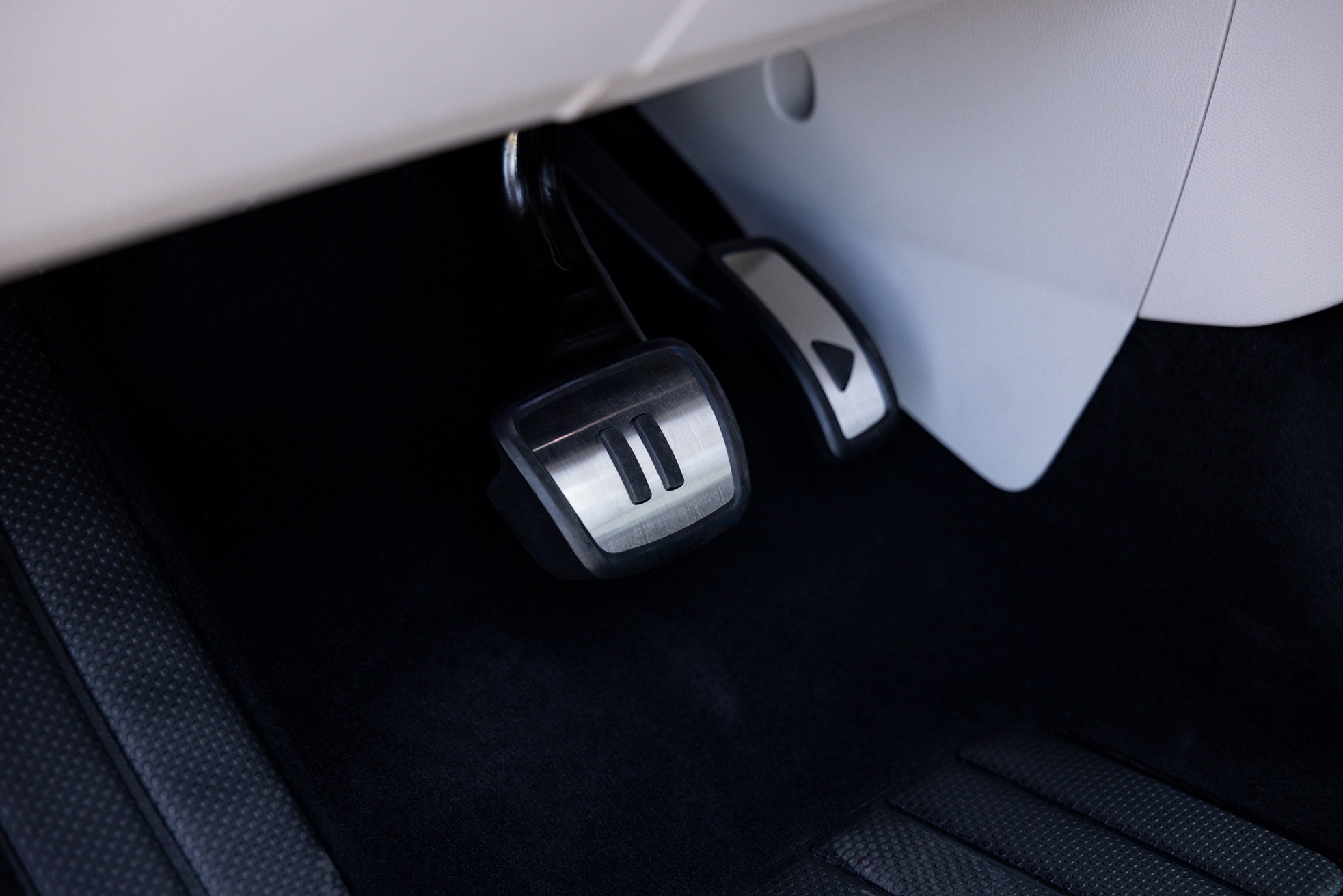
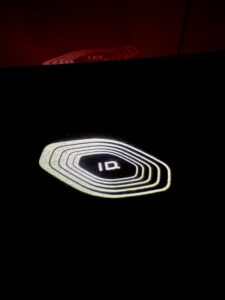
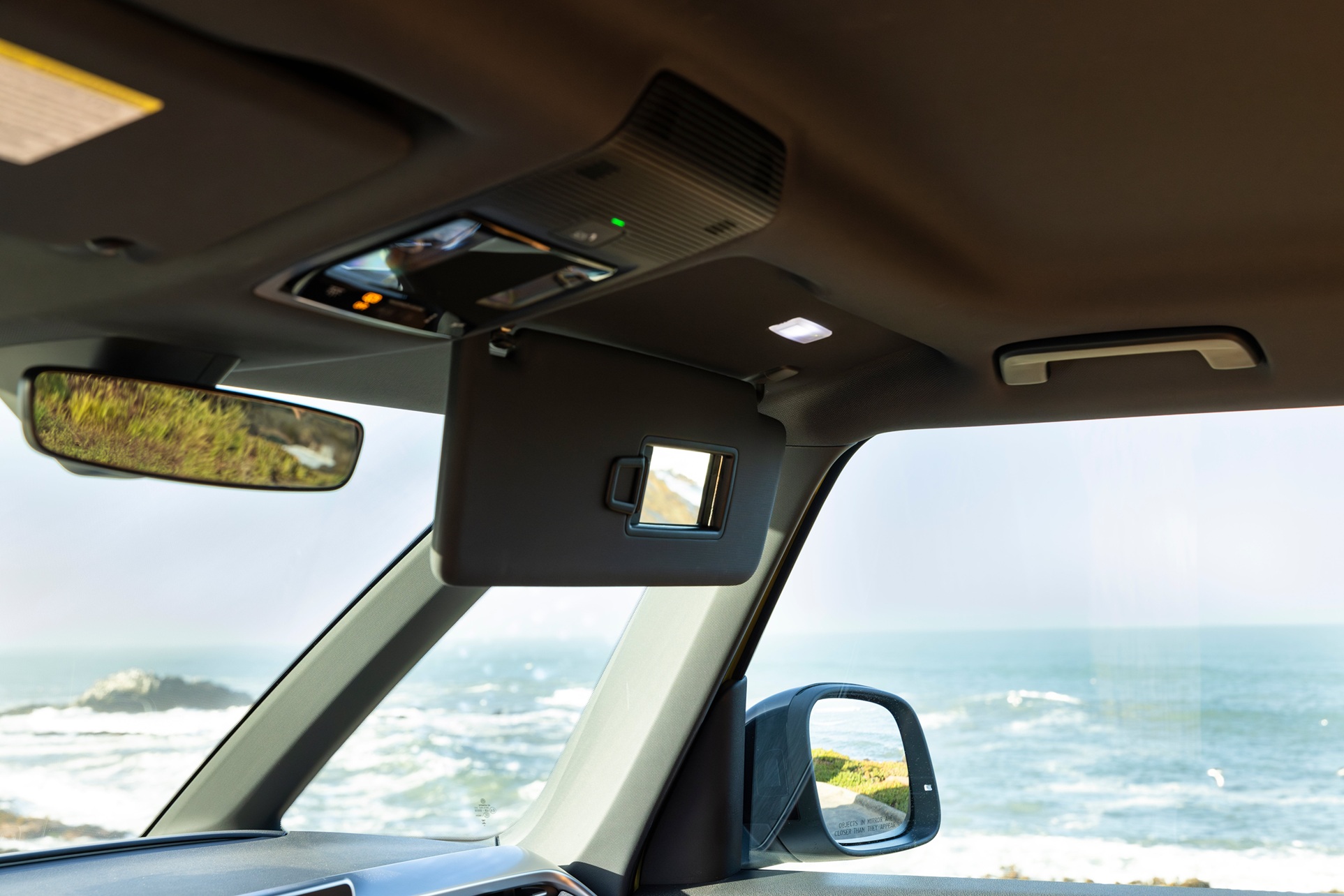
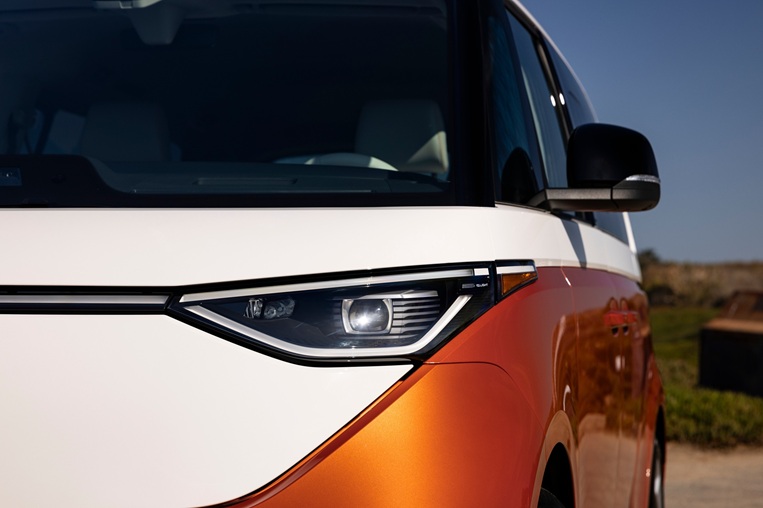
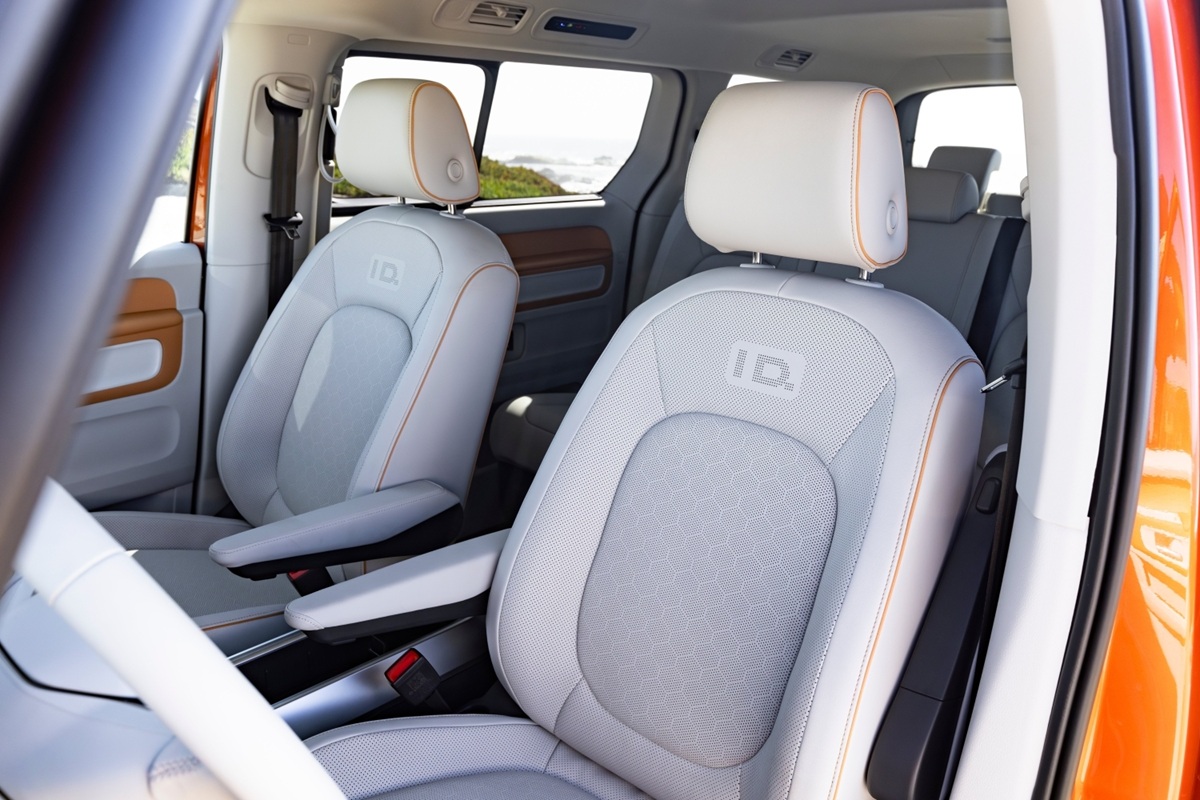
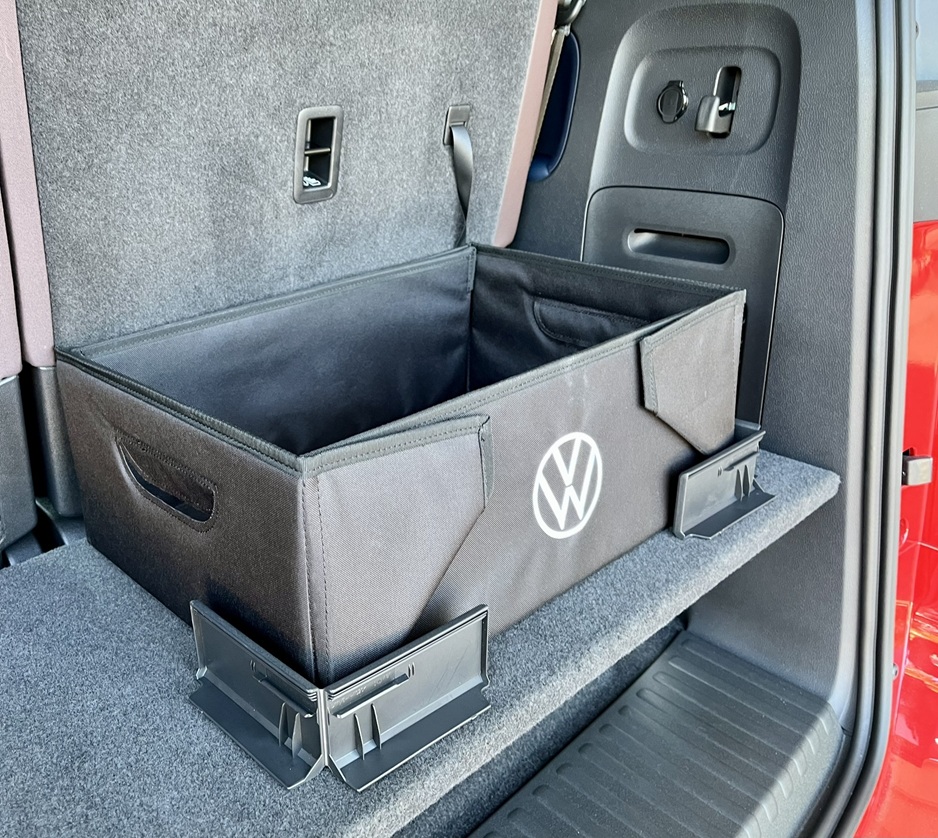
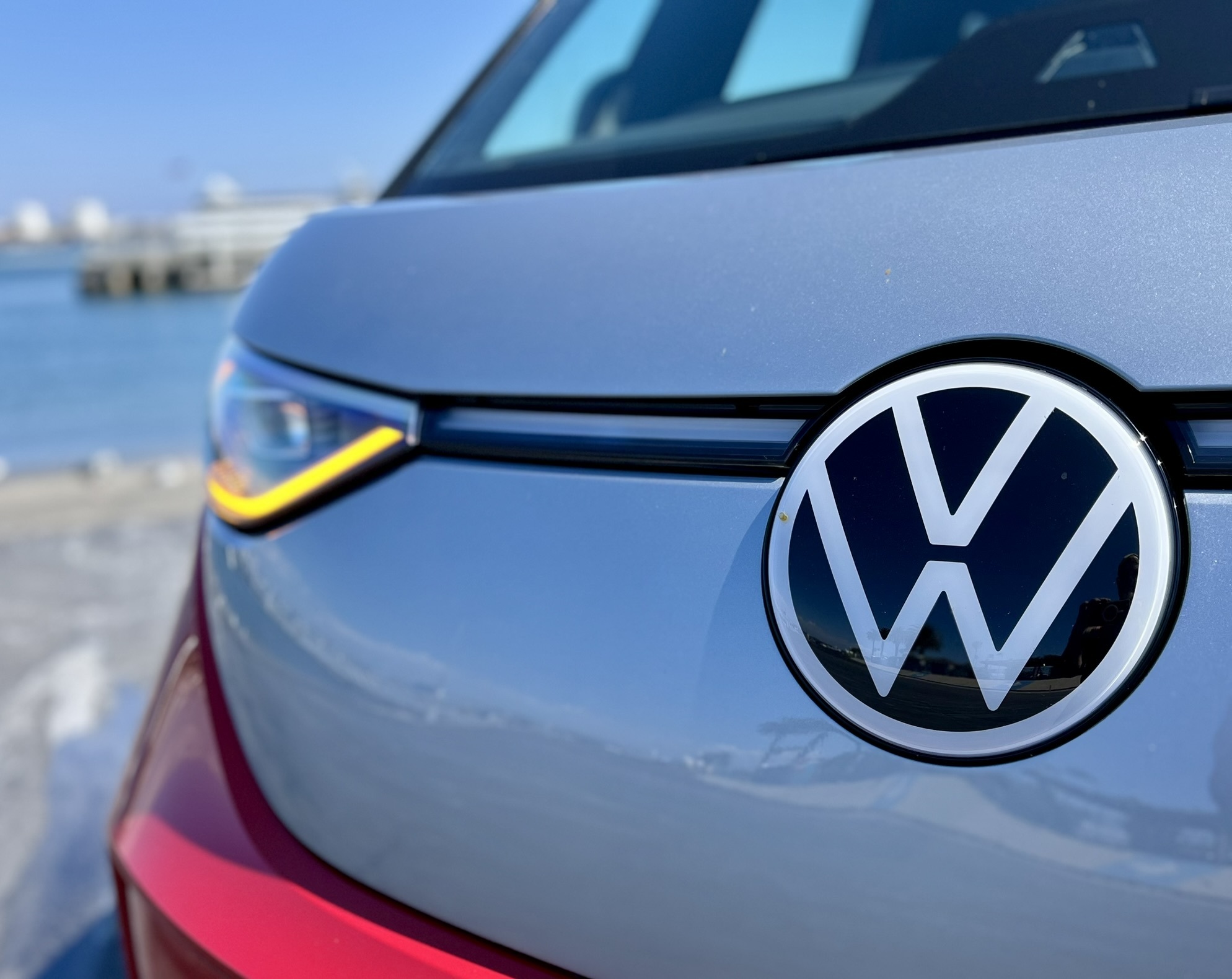
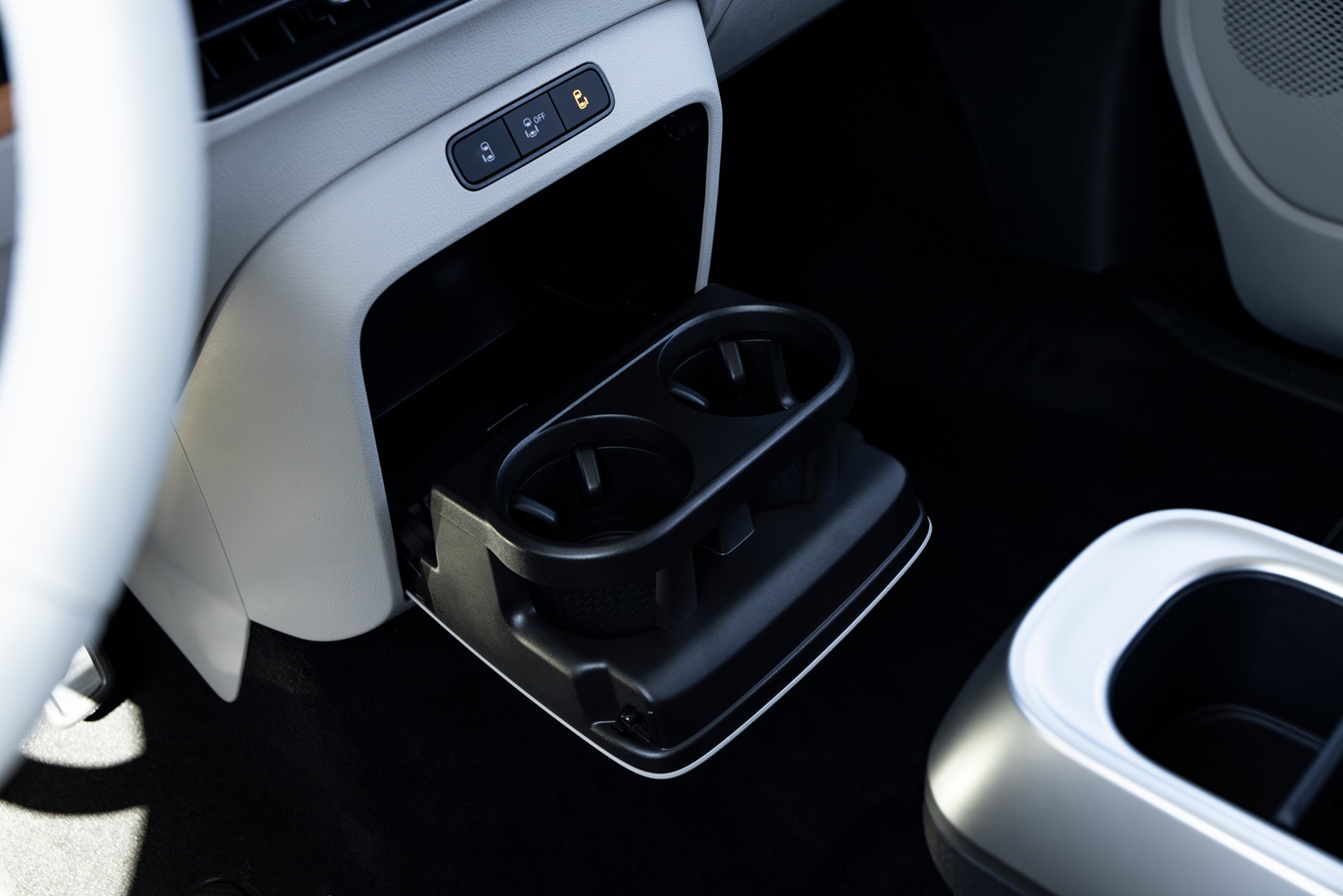
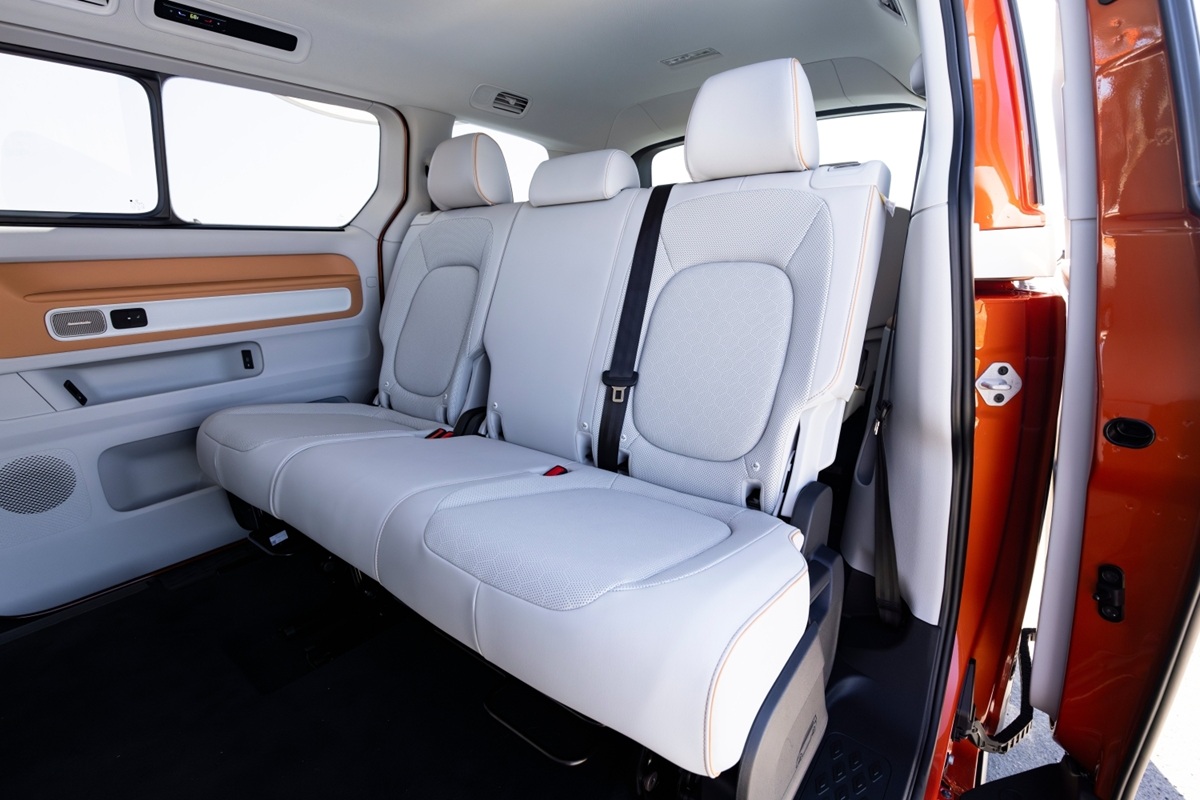
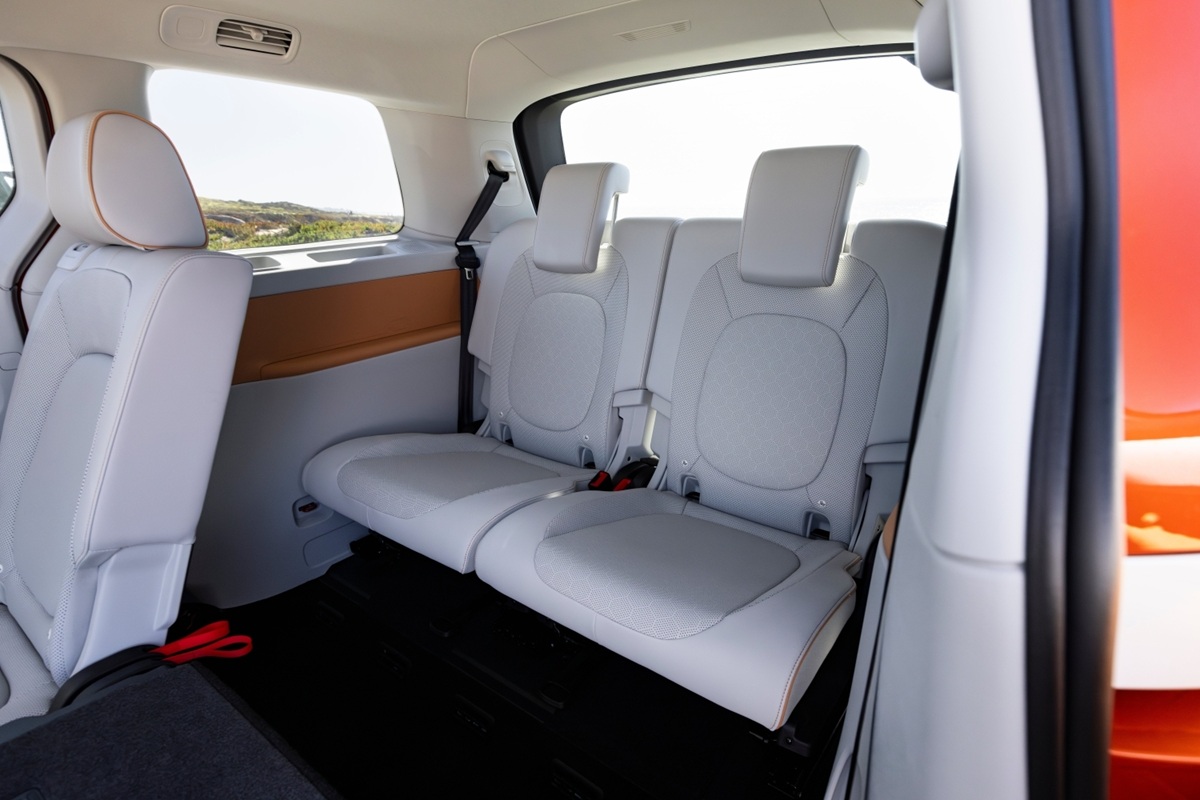
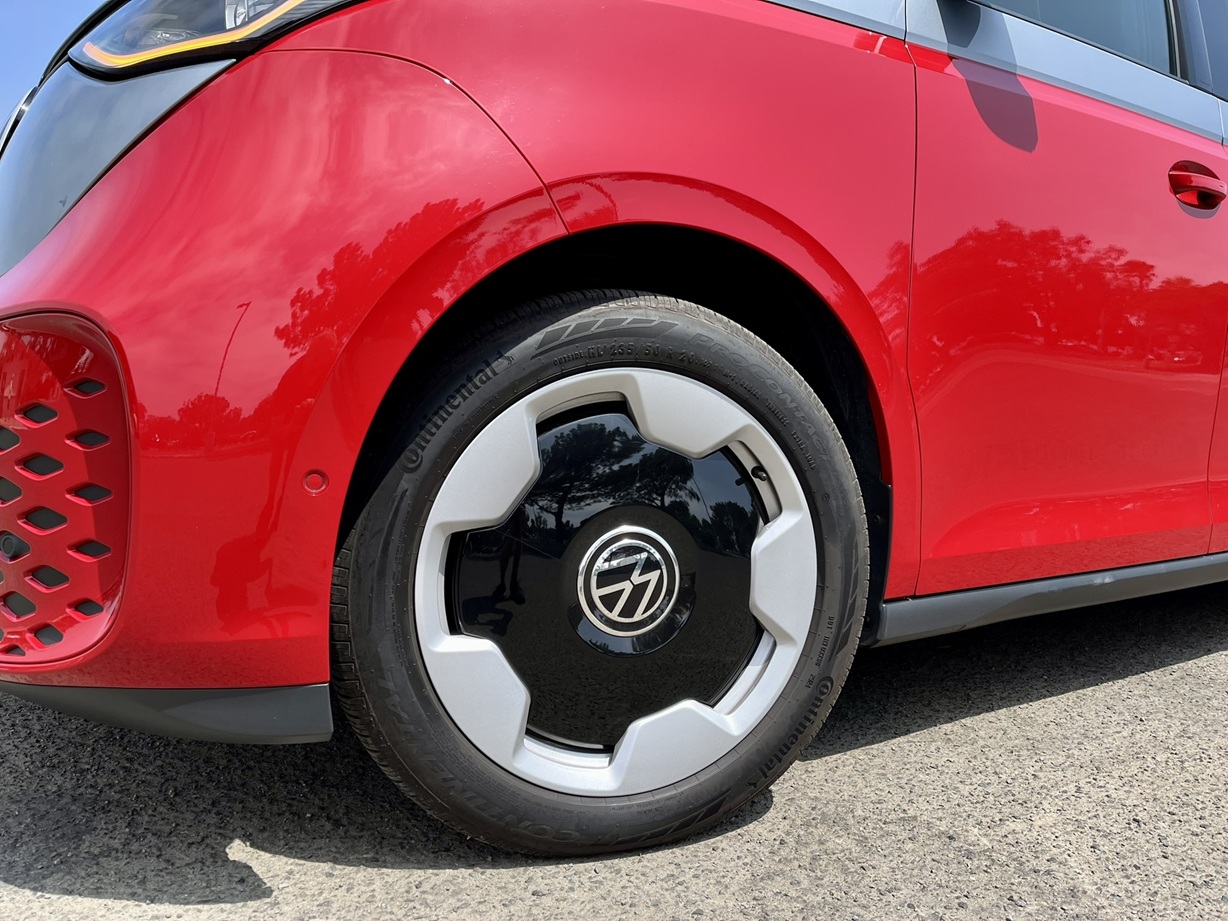
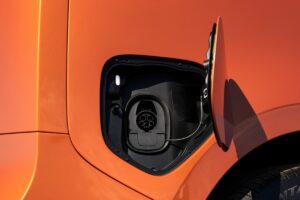
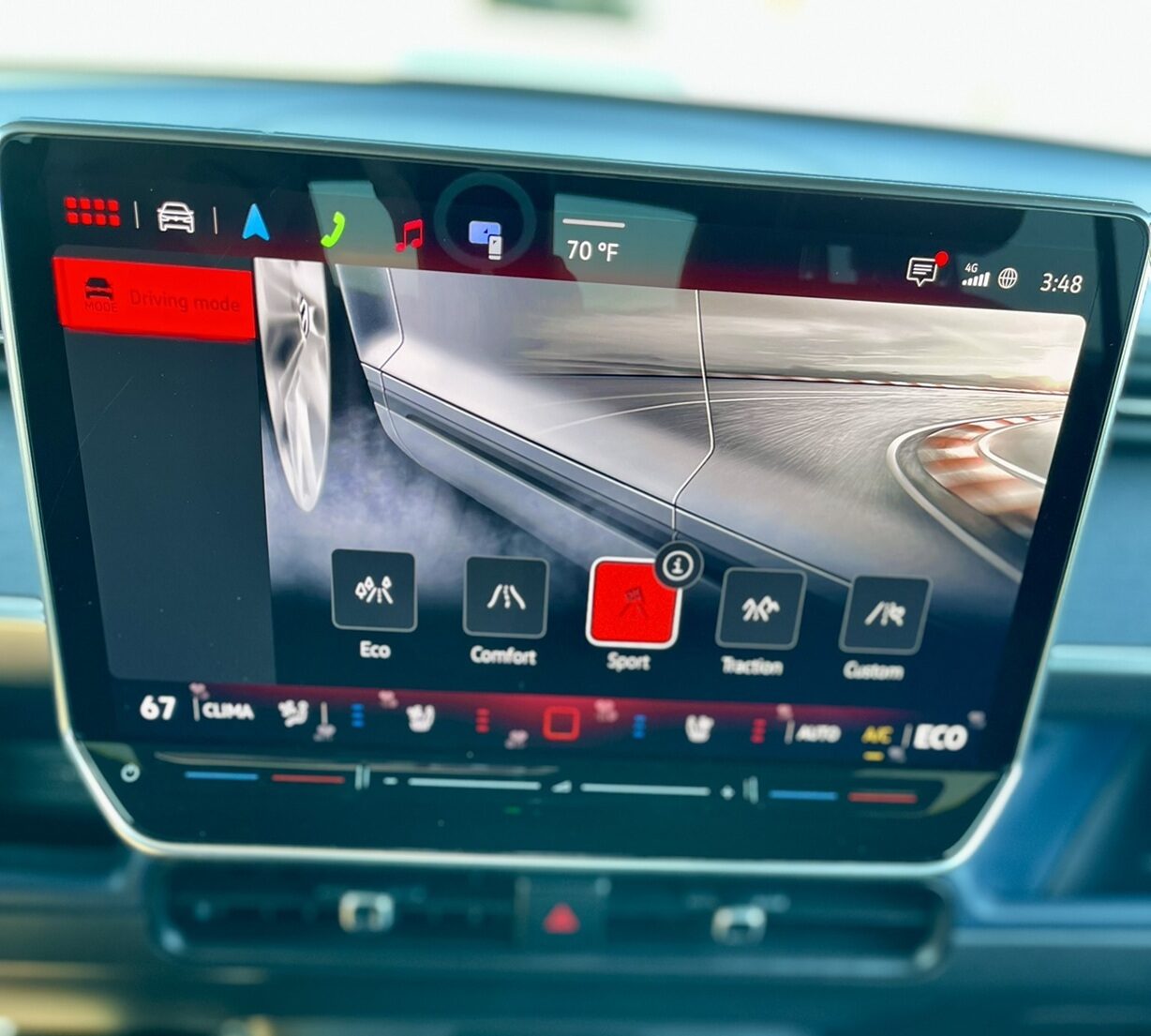
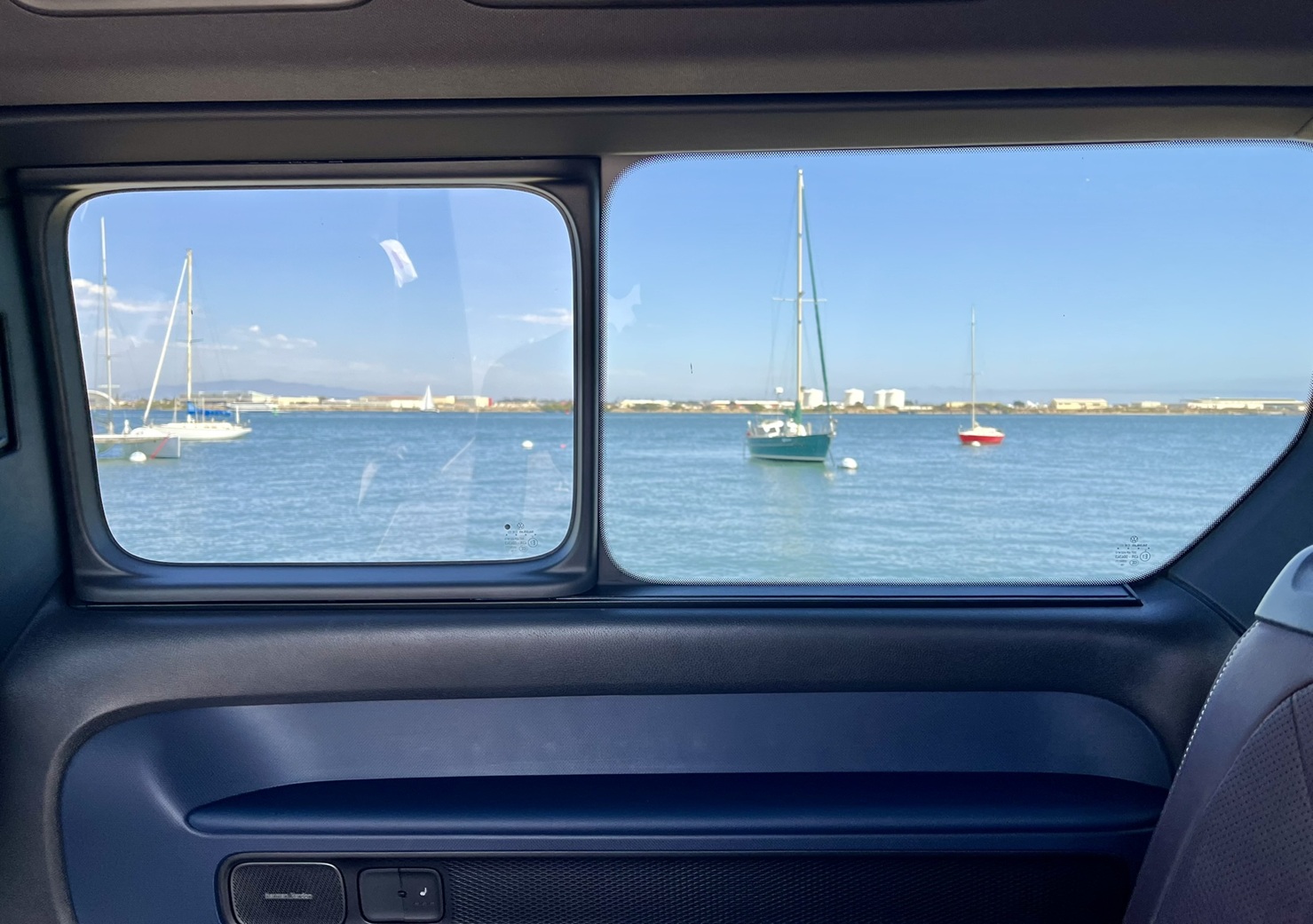
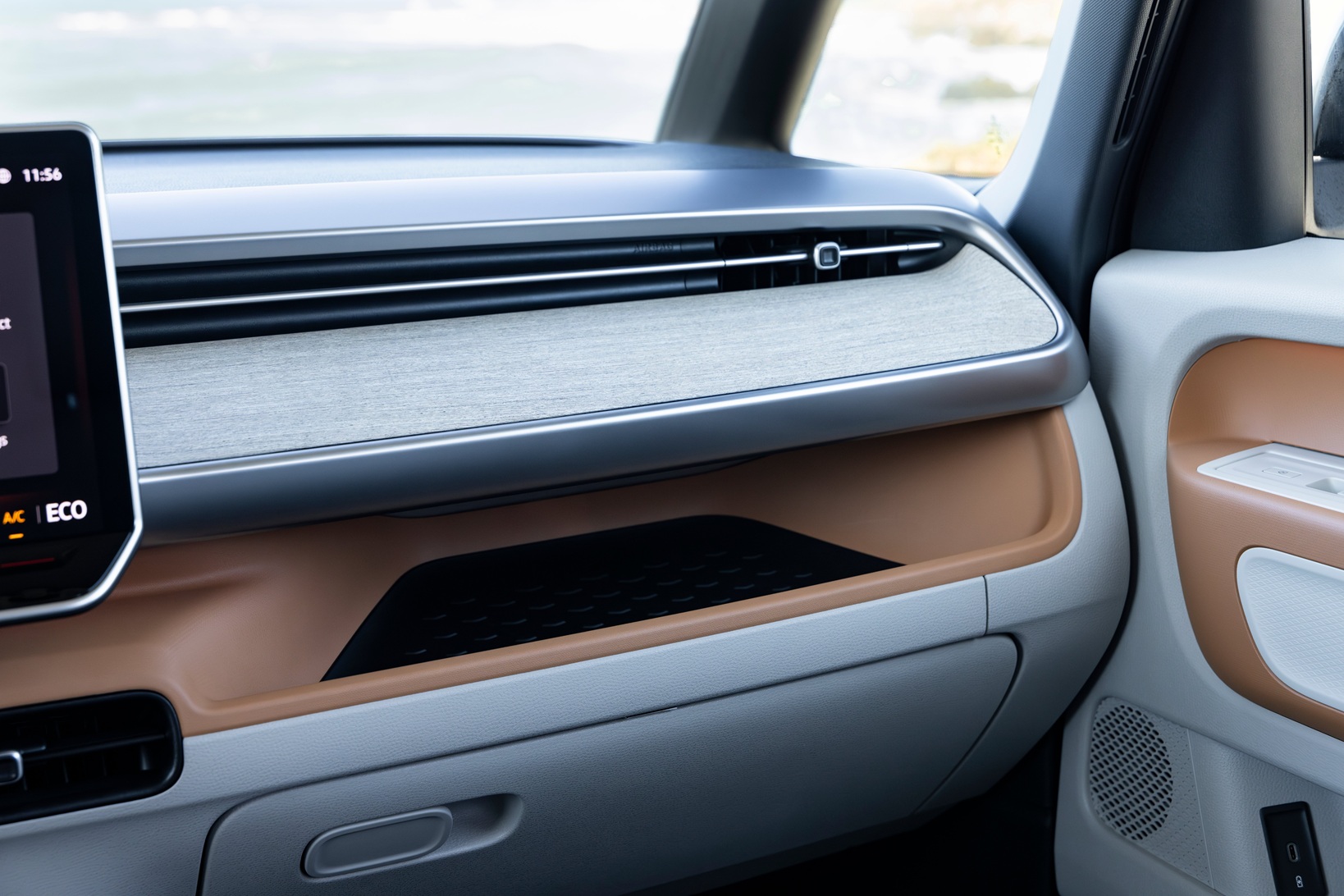
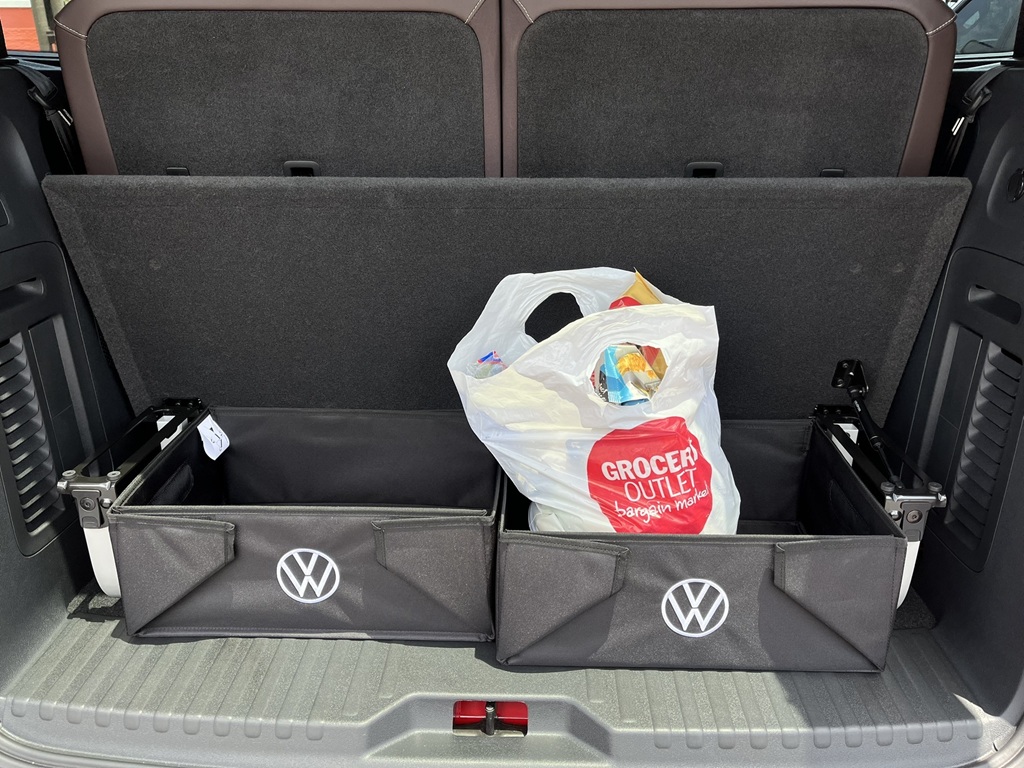
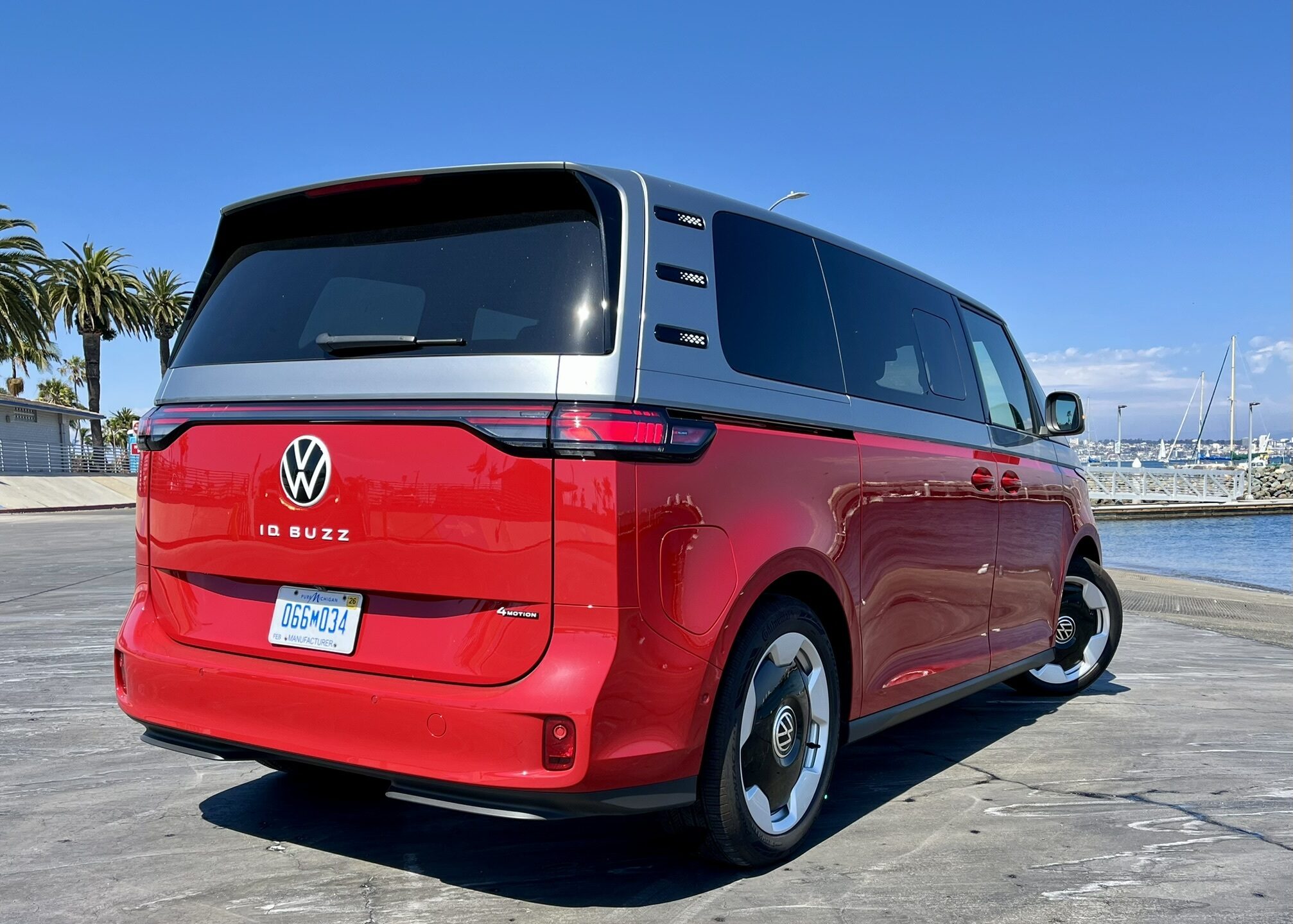













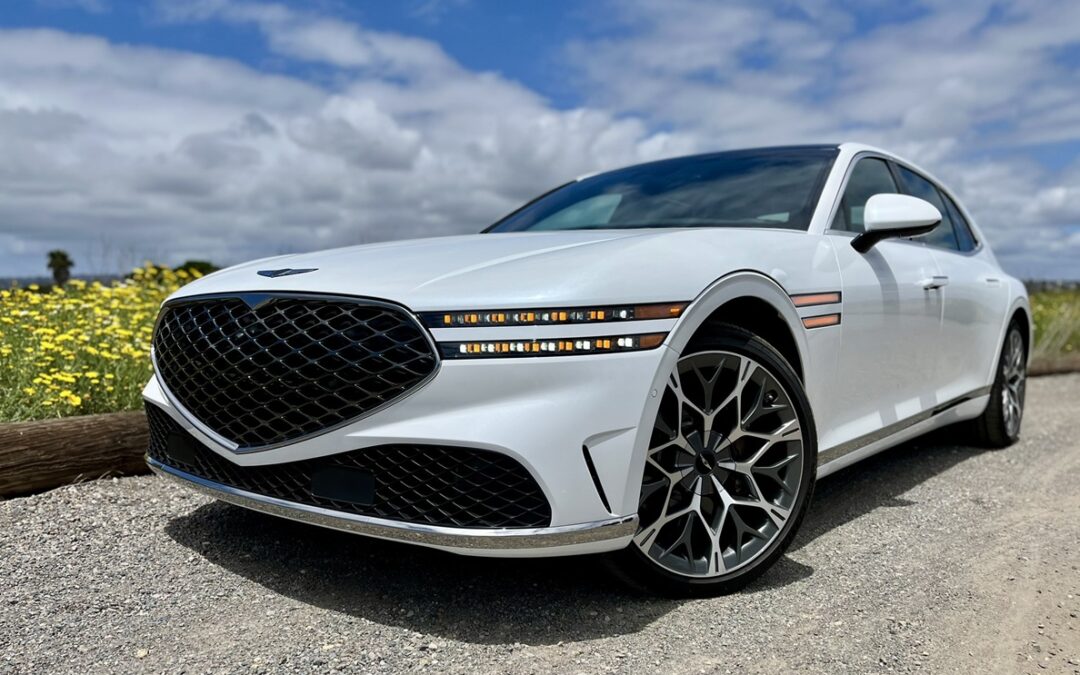































 There is adult legroom in the second row — 40.5 inches if a tall person is not sitting ahead.
There is adult legroom in the second row — 40.5 inches if a tall person is not sitting ahead.



